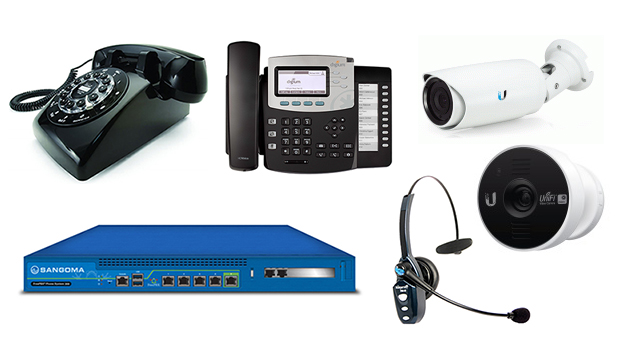With the continuing spread of high-speed broadband throughout the UK, there is the possibility to utilise this connectivity to improve your own communication platforms. SIP trunking is experiencing growth as businesses embrace the idea of unified communications and VoIP. SIP trunking is more flexible and durable than traditional voice communications systems, but can also be a huge cost saver.
Here are some of the issues and benefits to consider when considering your upgrade to SIP.
Will it all work together?
Interoperability is hardly ever an issue nowadays, with most leading IP PBX brands able to support SIP, such as Sangoma, Grandstream and Digium. Those that do not can be easily converted using a ‘gateway’ rather than replacing the PBX.
What equipment do I need or can I re-use?
Older equipment may not be capable of handling an updated VoIP telephony system, so when upgrading your telephone network to SIP trunking it makes sense to factor in the cost of upgrading your VoIP phone handsets and VoIP headsets, so you can fully realise the benefits and increased functionality of such a system. You can use ‘gateways’ to mitigate this cost but there is a reason to upgrade other than just cost savings. Increased functionality can drive your business and not only be a cost saver but also generate further revenue.
So what happens if I lose my internet connection?
SIP trunking is entirely dependent on a reliable broadband connection. The addition of voice traffic to an existing connection can place a strain on your current network, leading to a decrease in bandwidth and a drop in call quality. Most businesses have a stable connection with good throughput, but there are products that offer resilience. Cellular routers, bonded routers using satellite, wired and cellular connections to ensure you are never offline, regardless of what happens outside of your network.
Is it secure?
Security risks with SIP trunking can easily be safeguarded against using firewalls, border control, and fraud monitoring systems. People nowadays are investing in session border controllers which protect against DoS attacks, Toll Fraud and apply encryption. They also aid connectivity through different parts of the network, manage ‘quality of service’ to ensure your call quality is always optimum and provides a host of other benefits.
I hear it is cheaper?
Financial savings are an integral benefit of SIP trunking. By utilising SIP trunking you negate costly ISDN lines both BRI and PRI. Also, merging your data and voice into a single line not only reduces the resource costs required to efficiently operate your communication systems, but you eradicate the monthly rental associated with ISDN and PSTN lines. You will also be able to make free calls between other sites and home workers within your company and many providers provide free calls to mobiles as well, and if they do not it is simple to make your smartphone utilise SIP and gain the free calls, as if it were any other extension within your business.
I want my company to grow how do I future proof this?
With SIP trunking your business is able to expand or consolidate quickly, on a per channel basis and avoid the cost of unused lines, bringing about huge cost benefits and flexibility. With potential channels able to be added instantaneously, your communication systems can be as fluid as you need or want them to be.
How else can it help my business?
With SIP trunking, phone numbers are no longer directed to a set location and can be easily transferred to a new location often by yourself. Additionally, secondary paths allow for the re-routing of incoming calls, allowing your system to automatically divert calls to a different site if all the lines at your primary location are busy or if for some reason there is a failure at one site. It is important that you have a clear plan before embracing SIP, including extensions, routing, and hunt groups, so that configuration can be done quickly and accurately.
The summary
SIP trunking offers both lower costs and greater flexibility over conventional communication systems. Make a plan of what you want to achieve and find a partner to help you discuss what you require. The increase in usage of SIP and the fact that many SMEs are already moving to this for their communication needs, should show that if you haven’t moved, you should at the very least be thinking about it.
Share this story with your friends or work colleagues. If you want to stay up to date with our latest products, industry news and offers you can sign up to our monthly newsletters, keep up to date with us on Facebook or follow us on twitter @VoIPon.










